Evolutionary origin and gradual accumulation with plant evolution of the LACS family
- PMID: 38816698
- PMCID: PMC11140897
- DOI: 10.1186/s12870-024-05194-2
Evolutionary origin and gradual accumulation with plant evolution of the LACS family
Abstract
Background: LACS (long-chain acyl-CoA synthetase) genes are widespread in organisms and have multiple functions in plants, especially in lipid metabolism. However, the origin and evolutionary dynamics of the LACS gene family remain largely unknown.
Results: Here, we identified 1785 LACS genes in the genomes of 166 diverse plant species and identified the clades (I, II, III, IV, V, VI) of six clades for the LACS gene family of green plants through phylogenetic analysis. Based on the evolutionary history of plant lineages, we found differences in the origins of different clades, with Clade IV originating from chlorophytes and representing the origin of LACS genes in green plants. The structural characteristics of different clades indicate that clade IV is relatively independent, while the relationships between clades (I, II, III) and clades (V, VI) are closer. Dispersed duplication (DSD) and transposed duplication (TRD) are the main forces driving the evolution of plant LACS genes. Network clustering analysis further grouped all LACS genes into six main clusters, with genes within each cluster showing significant co-linearity. Ka/Ks results suggest that LACS family genes underwent purifying selection during evolution. We analyzed the phylogenetic relationships and characteristics of six clades of the LACS gene family to explain the origin, evolutionary history, and phylogenetic relationships of different clades and proposed a hypothetical evolutionary model for the LACS family of genes in plants.
Conclusions: Our research provides genome-wide insights into the evolutionary history of the LACS gene family in green plants. These insights lay an important foundation for comprehensive functional characterization in future research.
Keywords: Evolutionary origin; LACS family; Phylogeny.
© 2024. The Author(s).
Conflict of interest statement
The authors declare that they have no competing interests.
Figures
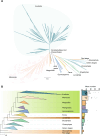
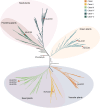

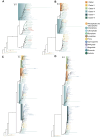
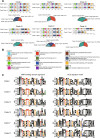
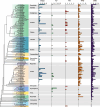
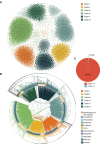

Similar articles
-
Genome-Wide Analysis and Functional Characterization of LACS Gene Family Associated with Lipid Synthesis in Cotton (Gossypium spp.).Int J Mol Sci. 2023 May 10;24(10):8530. doi: 10.3390/ijms24108530. Int J Mol Sci. 2023. PMID: 37239883 Free PMC article.
-
Genome-wide comparative analysis of long-chain acyl-CoA synthetases (LACSs) gene family: A focus on identification, evolution and expression profiling related to lipid synthesis.Plant Physiol Biochem. 2021 Apr;161:1-11. doi: 10.1016/j.plaphy.2021.01.042. Epub 2021 Feb 2. Plant Physiol Biochem. 2021. PMID: 33556720
-
Genome-wide analysis of a land plant-specific acyl:coenzyme A synthetase (ACS) gene family in Arabidopsis, poplar, rice and Physcomitrella.New Phytol. 2008;179(4):987-1003. doi: 10.1111/j.1469-8137.2008.02534.x. New Phytol. 2008. PMID: 18627494
-
The family of terpene synthases in plants: a mid-size family of genes for specialized metabolism that is highly diversified throughout the kingdom.Plant J. 2011 Apr;66(1):212-29. doi: 10.1111/j.1365-313X.2011.04520.x. Plant J. 2011. PMID: 21443633 Review.
-
Genome-level and biochemical diversity of the acyl-activating enzyme superfamily in plants.Plant J. 2011 Apr;66(1):143-60. doi: 10.1111/j.1365-313X.2011.04512.x. Plant J. 2011. PMID: 21443629 Review.
Cited by
-
Identification and functional analysis of AvLACS genes unveils their role in lipid homeostasis and waterlogging tolerance in kiwifruit (Actinidia valvata Dunn).Front Plant Sci. 2025 Jun 30;16:1580003. doi: 10.3389/fpls.2025.1580003. eCollection 2025. Front Plant Sci. 2025. PMID: 40661760 Free PMC article.
-
Genome-wide identification, transcriptome dynamics, and expression regulation of the key lignin biosynthesis gene families PAL and CAD in black walnut shell.BMC Plant Biol. 2025 Jul 3;25(1):859. doi: 10.1186/s12870-025-06884-1. BMC Plant Biol. 2025. PMID: 40610862 Free PMC article.
References
-
- Wang J, Li XX, Zhao XC, Na C, Liu HL, Miao HR, Zhou JH, Xiao JL, Zhao X, Han YP. Genome-wide identification and characterization of the abiotic-stress-responsive LACS gene family in soybean (Glycine max) Agronomy-Basel. 2022;12(7):18.
MeSH terms
Substances
LinkOut - more resources
Full Text Sources
Miscellaneous

